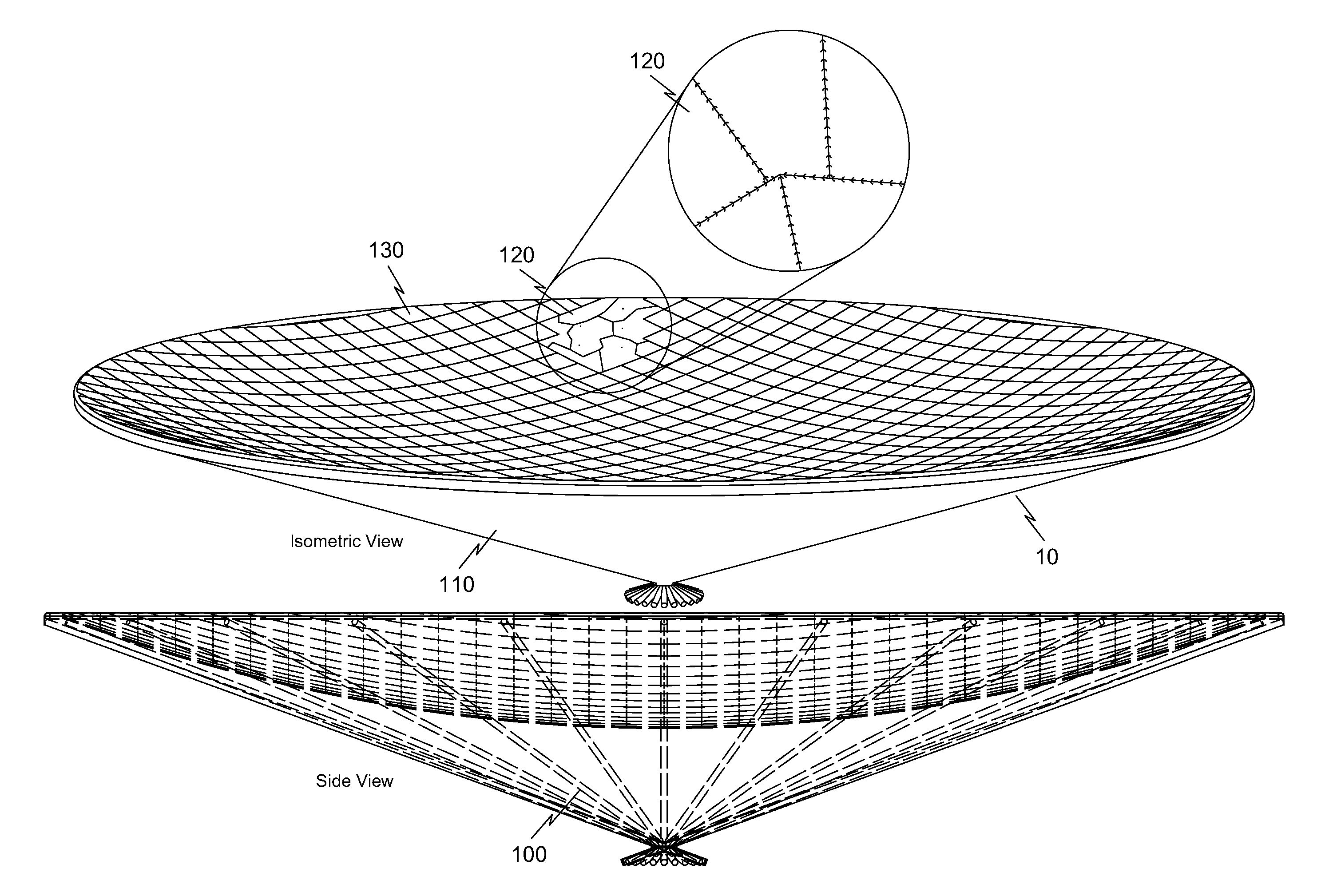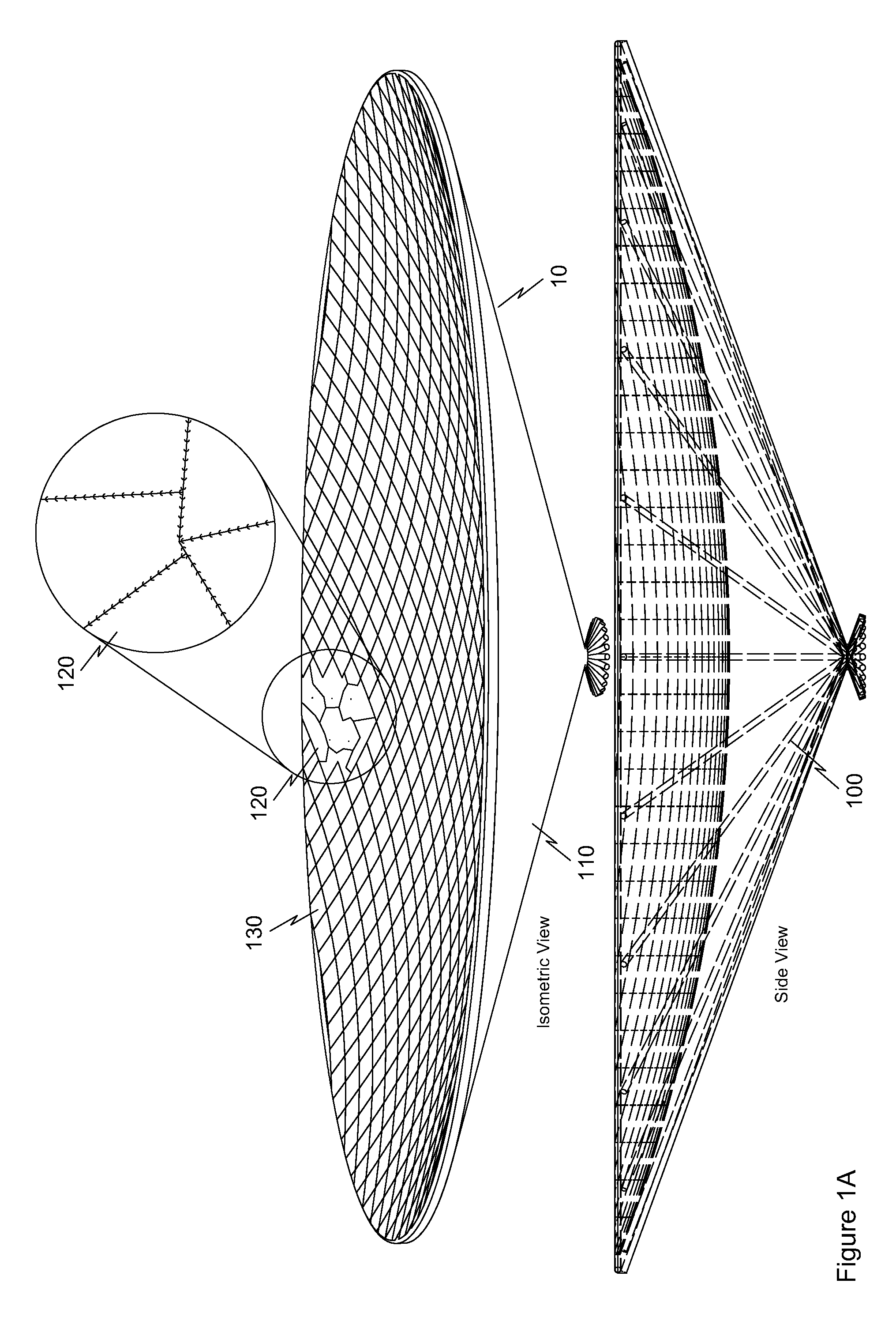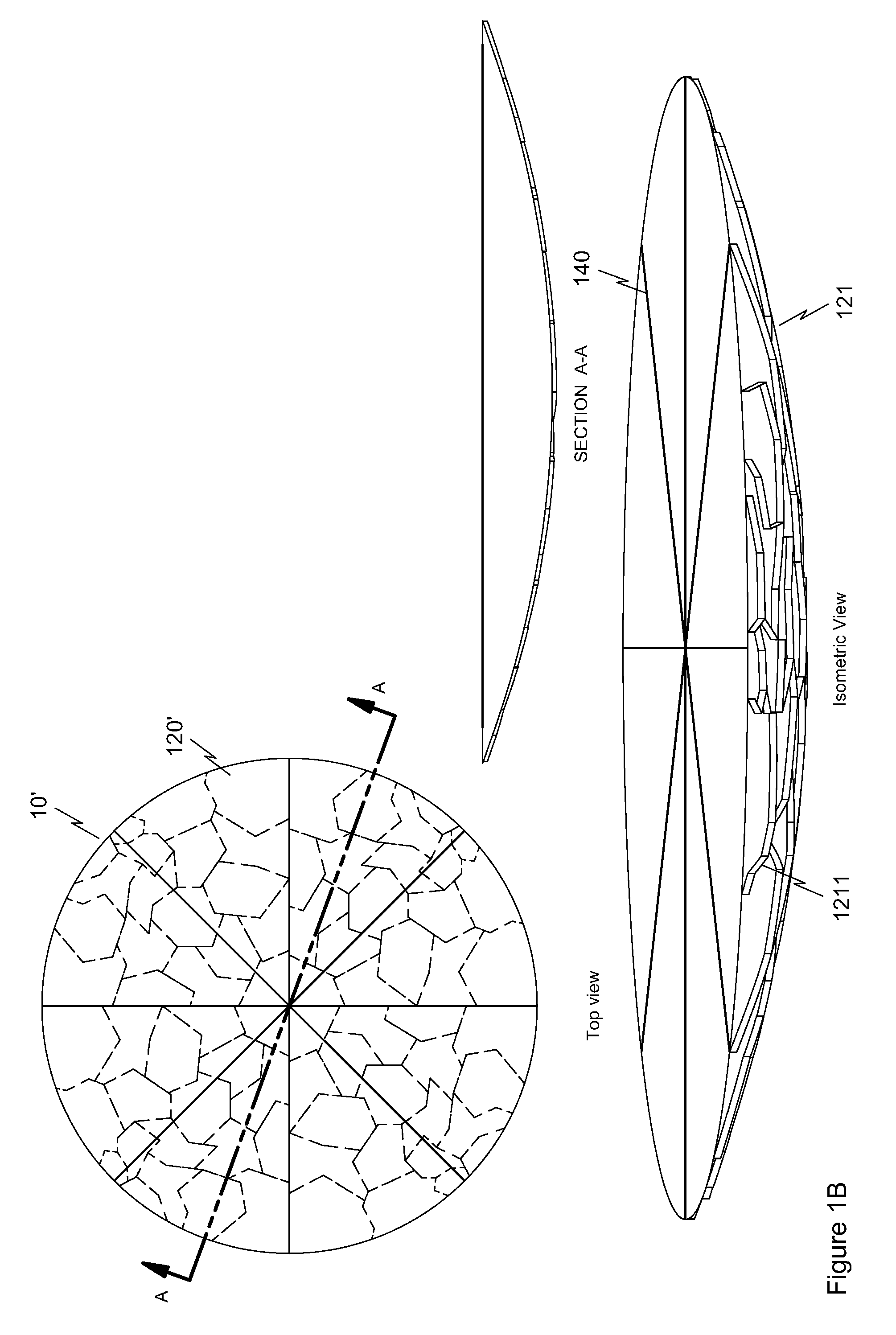With most
electricity today generated from burning fossil fuels, and almost all transport run by burning fossil fuels, humanity's rapidly increasing use of energy is both exhausting the easily recoverable fossil fuels and is endangering our accustomed climate through the
carbon dioxide released in burning these fuels.
But the expense and inefficiency of current methods of capturing that energy limit its ability to replace fossil fuels.
But the amount of
biomass harvested to feed humanity already puts a strain on our ecosystems, and increasing that harvest to provide fuel for our machines as well as for our bodies would be an environmental disaster.
While converting waste
biomass into bio-fuel can certainly play a part in reducing our
fossil fuel use, it can be only a modest part, and even if we learn to farm the oceans themselves for bio-fuel, it will not provide enough energy to satisfy continued growth in humanity's
energy demand.
But natural
photosynthesis is not the only way to put the sun's energy to use.
But while these simple measures for using passive solar to eliminate the need to burn wood or fossil fuels for heat are very cost effective, they cannot address the far larger issue of the rest of our energy use.
For
photovoltaics using un-concentrated
sunlight, however, the cost is still far higher than fossil fuels.
New technologies such as thin-film semiconductors and organic cells are designed to reduce the cost per
watt of the photovoltaic material itself, but their low efficiency takes more area.
But even if all commercial and residential rooftops in the U.S. were covered with thin-film cells, it would supply only roughly 10% of the U.S. electric demand—significant, but far from a total solution.
Covering additional area is inefficient because the low efficiency of the cells requires large areas of glass and supporting structures, which by themselves are comparable (at today's low thin-film efficiency) to the current cost of fossil-fuel electricity.
But even if
mass-production efficiency reaches that of laboratory samples,
indium,
gallium and
selenium are all rare enough that wide-spread adoption of thin-film CIGS would exhaust supplies long before CIGS could make a significant dent in
fossil fuel use.
Another thin-film
solar cell material is
Cadmium Telluride (CdTe), but while this currently has the lowest cost per
watt of any flat-panel material in production,
cadmium is roughly as toxic as mercury, and
tellurium is five times rarer in the earth's crust than either gold or
platinum.
Thus
cadmium telluride flat panels cannot fulfill a significant percentage of humanity's energy demands, and it would be courting environmental disaster if they did.
But while
silicon cells can approach an efficiency of 25%,
silicon is an indirect band-gap material so it takes a thick layer of specially-doped high-purity
silicon to approach this efficiency, and such silicon is expensive to produce.
Silicon cells are also fragile, and require large areas of glass to protect them.
With a typical
heat sink temperature of roughly 300° K (roughly
room temperature), it takes a heat source several hundred degrees hotter than this to obtain reasonable efficiency, and this is hard to obtain with un-concentrated
sunlight because the large
receiver surface area loses so much heat.
The large area makes it expensive to use a vacuum to eliminate conduction and
convection losses, and even if this is done, radiant losses from a large area become significant as the temperature of the hot source increases, making high temperatures and large temperature differentials from un-concentrated sunlight impractical.
However, most such energy-intensive transformations require far higher temperatures than can be readily achieved with un-concentrated sunlight.
The receiver area of a solar collector is thus a significant
limiting factor for using solar energy, both for thermal generators and
thermal transformation where it limits the achievable temperature, and for solar cells due to the cost of the cells and / or the scarcity of their materials and due to the lower efficiency materials increasing the cost of supporting structures.
But before the invention of the
Fresnel lens, lenses were far too small and expensive to be practical to concentrate sunlight to replace fossil fuels.
However the recent discovery of a palimpsest where a monk in the 13th century washed the ink off a description of some of Archimedes' other work in order to reuse the parchment for a prayer book (“Archimedes Palimpsest”, Wikipedia) shows that detailed copies of writings of Archimedes did indeed exist in the medieval world, proving that the
time gap to the 12th century cannot be taken as evidence against the veracity of those descriptions of the accomplishments of Archimedes.
But even the possibility of accomplishing the alleged feat with materials available to Archimedes has itself been widely disputed.
Thus this applicant holds that Archimedes almost certainly represents actual prior art, although the details of the means by which Archimedes accomplished this have been lost to history to the extent that they do not inform modern efforts at concentrating sunlight.
However, in designing ways of building concentrating mirrors that could be manufactured with ancient technologies, the applicant found that some of these designs would be very cost-effective if implemented using modern materials.
High concentration of the sun's light requires tracking the sun to keep the focus on the receiver, and this adds complexity, and hence cost, to high-concentration systems.
However this still trades some increase in complexity and cost for the non-
cell materials against a moderate decrease in the cost of the cells, making it a marginal improvement.
However the highest efficiency cells currently available are extremely expensive, currently about 200 times more expensive per area than silicon cells.
Even with an efficiency heading toward twice that of silicon, these cells are thus too expensive to be cost effective at moderate focus.
Going up toward 1000 suns saves significantly on the
cell cost, even given the slight drop in the cells' photovoltaic efficiency, but requires accurate tracking and accurate mirrors (
solid lenses are too expensive) or accepting significant light loss (Fresnel lenses lose efficiency beyond a few-hundred-fold concentration, and although complex domed Fresnel lenses lose less than flat or cylindrical Fresnel lenses, even they do not approach mirrors in efficiency at concentrating light) (“Japanese Activities of R&D on III-V
Concentrator Solar Cells and Modules”, 19th EUPVSEC).
Multi-junction cells are also thermally fairly tough, being able to operate continuously up to 100° C., but even so require careful cooling at high concentrations.
In addition to temperature reducing the raw efficiency of a
cell, high temperatures also increase the resistance of the
cell contact network.
Larger “wires” in the
contact network would reduce the resistance, but conductive traces on the cell surface block the light from reaching part of the cell, so larger wires have had to be balanced against this light loss.
Several alternatives have thus been pursued, such as more complicated cell manufacturing that deposits
metal “wires” through holes in the cell to allow putting both the positive and negative contact networks on the back of the cell, but this is more expensive.
But current
heliostat designs require tall towers to keep the mirrors closer to normal to the sun's rays at low sun angles, increasing expense and limiting the maximum concentration; heliostats are generally less efficient users of real-estate than other concentrating designs; and the significantly changing angle of the sun relative to the
tower, even with tall towers, changes the effective
focal length of curved mirrors which makes curved mirrors less effective at focusing, thus requiring additional curved mirrors (or much larger numbers of flat mirrors) to achieve the desired degree of concentration.
Since the areal (per unit area) cost of a tracker rises with small trackers, heliostats either sacrifice concentration or use huge numbers of very large flat mirrors and correspondingly tall towers.
In addition to taller towers being more difficult to build, the large area per
heliostat prevents heliostats from being cost-effectively used for small-scale
electricity generation from small areas.
However, such concentrators have traditionally used expensive, fragile glass mirrors; to achieve a tight focus, these larger mirrors are slumped-molded, in many cases to specific shapes for specific positions on the tracker, adding to cost and complexity.
Even with
high concentration the focus is also large, so if a single cell or multiple cells in parallel are used, the current produced by the cell or the cells in aggregate is very large, requiring huge conductors; if multiple cells in series are used instead, cell balancing becomes critical to match the cell currents because even a single cell receiving insufficient light has a large
impact on the performance of the entire series of cells.
However, the prior art has typically relied on expensive, fragile, molded glass mirrors for this; and if mechanical cooling is used, bringing
coolant to numerous cells blocks a significant portion of the light, whereas if
passive cooling is used, by the time the cells are small enough for
passive cooling to be effective, the expense of wiring the numerous cells together is appreciable, and the
passive cooling elements themselves also block light in many such systems.
Ensuring balanced cell photocurrents by
evening out the light across the cells of a multi-cell focus has been accomplished with homogenizers, but these typically have had an average of at least one reflection or
refraction per
photon in the light path, which costs efficiency since reflections and
refraction are not perfect, and can even lead to
homogenizer heating when very
high concentration is used.
Overcoming unbalanced cells with bypass diodes has also been accomplished, but when the light on a cell is insufficient for the cell's short-circuit current to equal the optimal current of the other cells in the series, the cell's bypass
diode bypasses the cell entirely, leading to no
usable output from the cell.
Since a “cell string”, or series of cells, typically contains dozens to hundreds of cells, completely losing one cell is better than significantly impacting an
entire cell string; however if the light at a large focus is significantly uneven, enough cells may be under-illuminated to significantly reduce
power output.
Having a large number of bypass diodes also adds to the cost and complexity of a
system.
An alternative is to have the whole tracker mounted on multiple wheels on a circular rail so that tracking on a first axis can be accomplished by “driving” the tracker around the rail; while this provides an exceptionally stable base, it is more expensive and it does not leave the land under the tracker available for other purposes.
While one-axis trackers have been ganged together so that multiple tracking platforms can be aligned using a single set of sensors and a single motor, the mountings of large two axis trackers have heretofore made this impractical.
Thus each tracker has required its own accurate, and thus expensive, alignment sensors and tracking motors, preventing significant economies of scale in multi-tracker installations.
There are places, such as residential rooftops, where large two-axis trackers are not practical.
Heliostats with small two-axis trackers ganged together have been pioneered by Findell in U.S. Pat. No. 4,317,031, but have not been able to cost-effectively achieve sufficient concentration to make high-efficiency photovoltaic cells practical.
However while one-axis tracking is simpler than two-axis tracking, one-axis tracking has not previously supported the very
high concentration needed to make either high-efficiency cells practical or to efficiently generate the very high temperature steam needed to make solar thermal electrical generation efficient.
Solar energy has often been criticized for being intermittent and non-dispatchable.
While solar thermal systems with heat storage can take care of the intermittency, making solar thermal with storage dispatchable power rather than base-load power requires oversized turbines and generators, dramatically raising costs.
Photovoltaic systems have been neither dispatchable nor non-intermittent, reducing their value for supplying power beyond intermittent peaking power.
Space-based solar energy collection would also eliminate intermittency, but space-based solar collection systems have been too heavy to launch on a scale that would be useful for transmitting energy back to earth.
While gossamer mirrors could reduce the weight by concentrating sunlight, these have required struts under compressive forces to maintain their shape, again making large mirrors impractically massive, and cooling systems suitable for high-concentration cells have also been too massive to be practical to launch in sufficient quantity.
While in the First World manual labor is expensive and cooking is generally performed on electric or
gas stoves, much of the Third World has significantly different needs.
Automated tracking systems are generally too expensive for Third World needs, so the choice is usually between expensive small diesel generators or doing without electricity.
Wood or dung are often used for fuel, and in sunny areas of the third world these are often in scarce supply, so gathering them consumes an inordinate amount of time.
While solar energy has made some progress in the Third World, it has been limited to a few solar cookers and inefficient
flat panel photovoltaic systems that are too expensive to provide enough electricity to meet basic needs.
 Login to View More
Login to View More  Login to View More
Login to View More 


